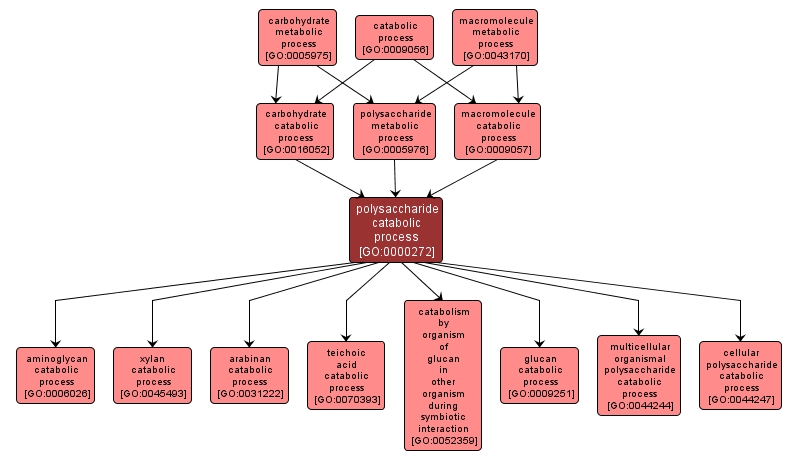GO TERM SUMMARY
|
| Name: |
polysaccharide catabolic process |
| Acc: |
GO:0000272 |
| Aspect: |
Biological Process |
| Desc: |
The chemical reactions and pathways resulting in the breakdown of polysaccharides, polymers of more than 10 monosaccharide residues joined by glycosidic linkages. |
Synonyms:
- polysaccharide breakdown
- polysaccharide degradation
- polysaccharide catabolism
|
|

|
INTERACTIVE GO GRAPH
|














